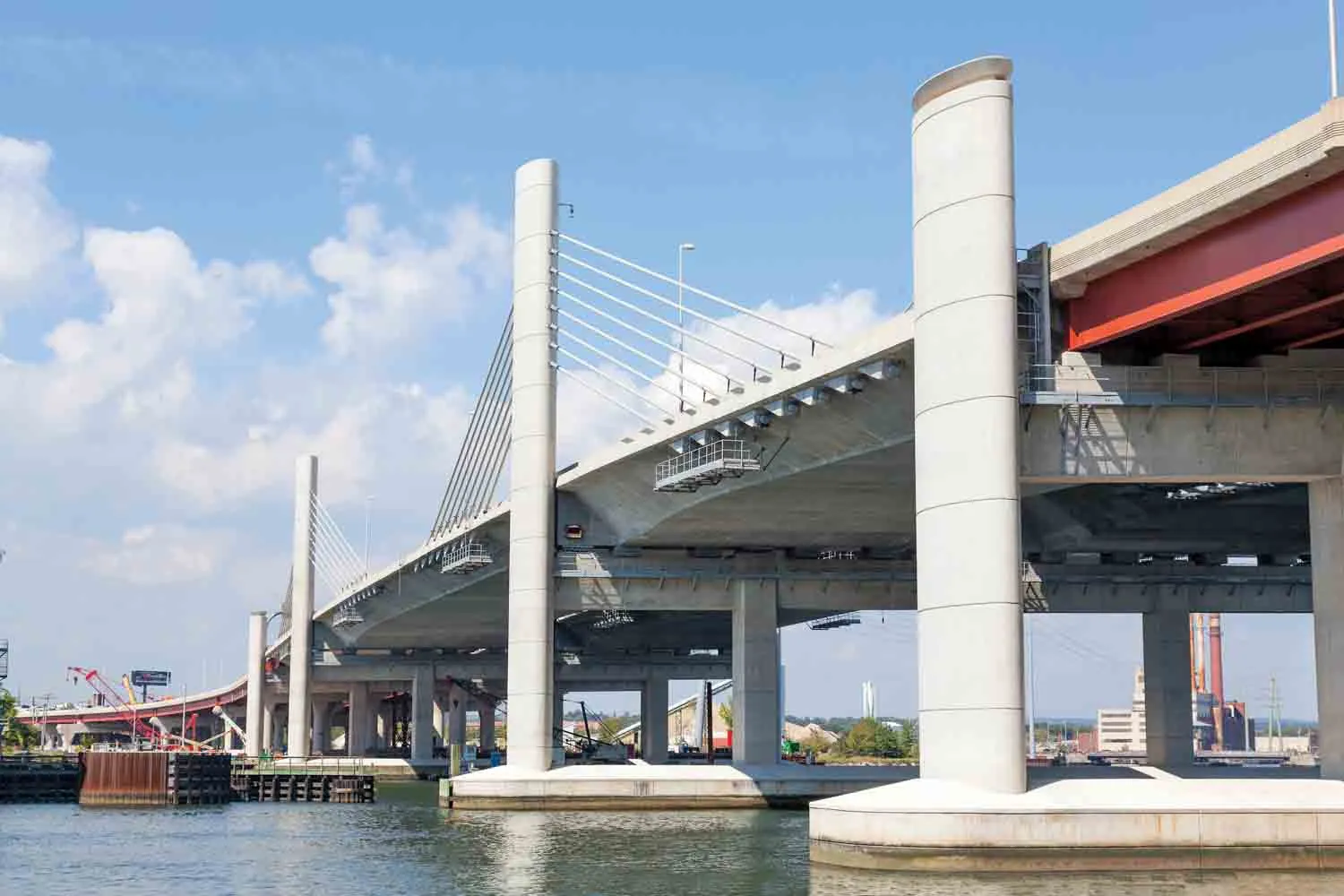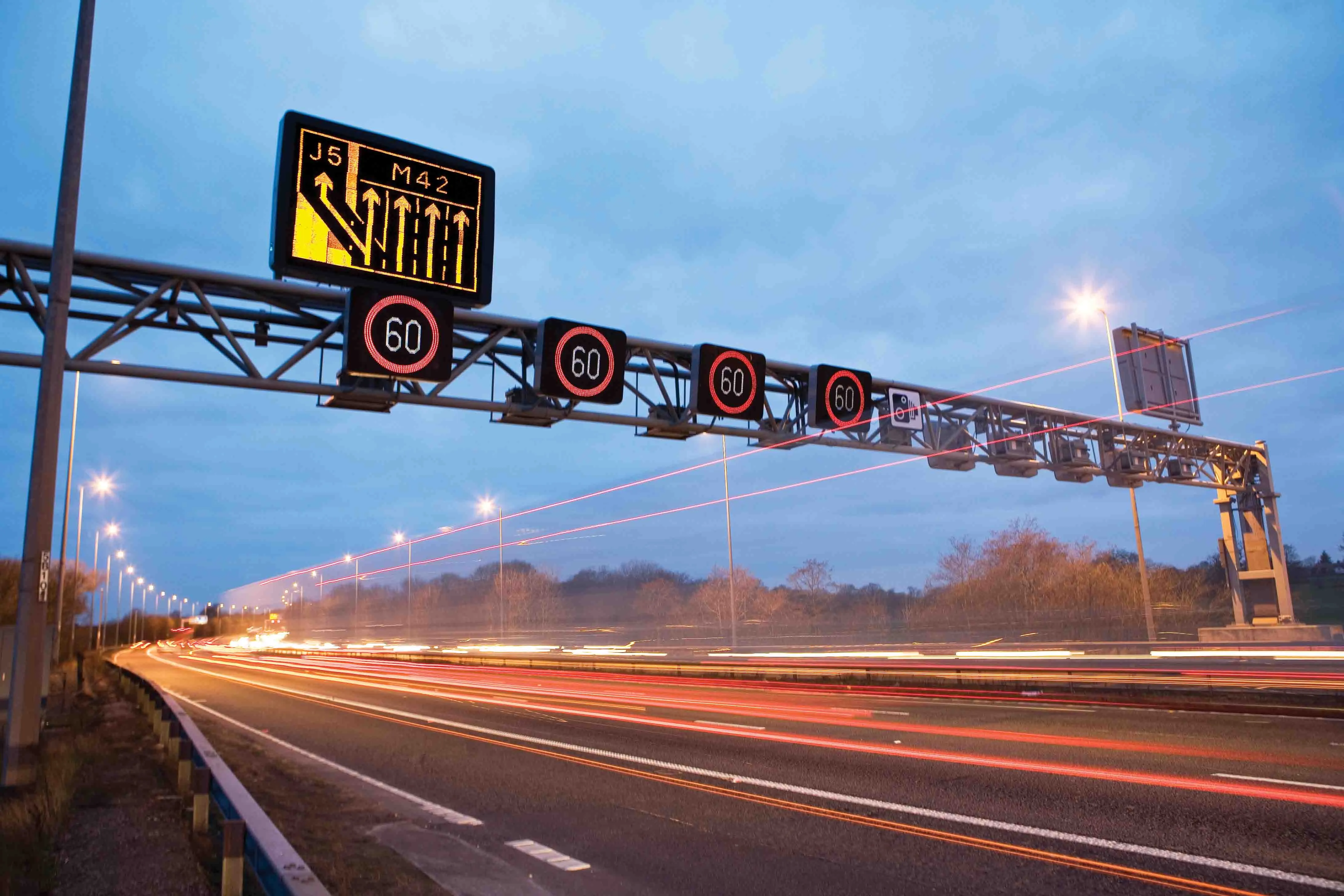
Keeping goods and people moving safely is the primary objective of any transport authority across the world. Delivering this objective on motorways and making the most out of network capacity requires all the resources, skills and ingenuity of those in charge of managing the infrastructure.
When the network can no longer cope with demand, additional capacity is required. This can be accomplished either by constructing new infrastructure, by upgrading, or through widening the existing motorway.
In any case, the contractor and operator would be expected to work in such a way that keeps disruptions and safety risks to a minimum while ensuring the work is delivered to budget and time. This is achieved through effective management of incidents and good forward planning to minimise the impact of heavy maintenance on the traffic. But what, in practice, can they do to achieve seamless widening works?
Experience counts
Egis has great experience in managing widening works on heavily trafficked roads. Skills were exhibited on outstanding projects such as London's orbital M25 in the UK, a €6.8 billion project, the €340 million Munich Augsburg A8 in Germany and more recently on the A63 in the south of France, a €1.1 billion project.To be successful, widening works should rely on a robust implementation plan. The development of such a plan should start with a construction phasing strategy tailored to the emerging design and recognising local operational constraints. An extensive programme of inspections and surveys is likely to be required with particular attention to underground conditions, pre-existing utilities or services. The logistical needs should be taken into consideration, in particular safe accesses and egresses to the work site.
Engagement with all key stakeholders is fundamental to inform the development of the design and identify any constraints likely to affect construction. As the construction phasing strategy starts to emerge, its likely impact on the travelling public will need to be tested through traffic modelling. Changes should be made to mitigate emerging issues.
“Preparation encompasses three main actions,” according to Cédric Dussaussay, traffic and maintenance manager at Egis Exploitation Aquitaine, operator of the A63 project. The first step is the global scheduling of widening works, he explains. “Then the operator integrates this schedule into its daily activities. The third step is the development of documentation related to third parties.”
In 2012, as part of the 40-year concession, the N63 was upgraded to highway standard and additional capacity was created by adding an extra lane in each direction. Widening was aimed at improving the level of service offered to users and improving the safety of the structure in order to better integrate the A63 into the environment.
Regulatory requirements must be anticipated well in advance, as administrative and right-of-way procedures may take some time. Strong coordination of - and commitment by - constructor, operator, local authorities and third parties is key for successful widening work. Concerns among the players may differ, but all must work towards strong risk identification and to achieve minimal impact of the works on traffic.
Works schedules, operating modes during that period, risk reduction measures for staff, temporary traffic management and public information measures are parts of the preparation process that have to be submitted to the road authority. For instance, with 200,000 vehicles per day on the M25, scheduling widening works to 2x4 lanes was critical and intricate.
Long-term vision
It is vital to combine a short-term view - weekly schedule of traffic management - and a long-term vision of how the construction site will progress as the infrastructure is built. Regular meetings to pass on updated information are essential. The project director must also allocate clearly the responsibilities for all parties and manage the interface with the relevant authorities.On the A63 project, meetings were held every two weeks to ensure a good interface between constructor, concessionaire and operator. In addition, the operator held a weekly traffic management meeting to share information with external and internal stakeholders.
Beyond the sections of highway that are being widened, the entire stretch is affected. “Operator staff were mobilised along all sections,” says Dussaussay. “For instance, Egis Exploitation Aquitaine increased the number of patrol teams during the widening works.”
On the M25 widening works, the operator and contractor developed a joint operating agreement to establish roles and responsibilities of each party during construction. BIM - building information modelling - was used extensively at the Dartford Crossing to test the design and the impact of the temporary traffic management layout on the travelling public.
Civil works will continue to generate additional tasks and constraints on normal day-to-day activities. Some maintenance activities should be postponed and others will need to be executed during the night. There could be supplementary maintenance work needed to hard shoulders because they may not be designed for heavy and continuous traffic.
In Germany, the A8 widening works were conducted successfully while providing resilient environmental mitigation measures. During construction, the operator provided a free vehicle-recovery service within the road works, implemented safety speed restrictions and used CCTV cameras to support incident management. Provision of free vehicle-recovery - usually by the contractor - is common practice in the UK.
Even with the best possible planning, some changes are inevitable. Whether the changes affect design, construction methodology or local operating arrangements, they will need to be handled in a controlled manner to avoid impact on safety, programme and costs. Project governance should allow for such changes and provide a platform for stakeholders to resolve any issues that might arise as a result.
During widening works, access issues are likely to arise for both operator and constructor. Operational accesses turned out to be a major safety subject on the A63. Consequently, the constructor drew up emergency access plans. The plans were reviewed through on-site visits by the operator, police and emergency services so they could verify access procedures before an incident.
On the M25, constructor site access and egress issues were addressed during regular meetings to ensure ongoing coordination such as desk-top exercises ahead of each traffic management switch, shift briefing, etc.
At the traffic control room, activities are adapted to the situation with dedicated emergency procedures. Synoptic tables evolve daily. “On the A63 project, they were updated as necessary to reflect progress on site,” said Dussaussay. The communication of those synoptic tables is essential to all involved parties, both externally and internally.
Effective communication
Communication is the last pillar of seamless widening works. Dedicated communication campaigns using flyers, posters, etc. can inform users ahead of traffic issues and also of general construction progress.Satisfactory results can be obtained using average speed cameras to enforce site speed limits. Also useful is the installation of semi-permanent fencing to segregate traffic from a worksite and the placing of temporary variable message signs.
However, social media increasingly supersedes variable message signs and highway radio. Almost all users are now connected through their smartphone. Hence, Egis strengthened its position on connected vehicles and greatly invests in innovation.
Internal communication should be afforded all necessary help during widening works. On the A63, the tolling staff was an active part of the communication strategy and was a “bridge between road users and the project”, says Dussaussay. “Moreover, Egis Exploitation Aquitaine had to reschedule and reinforce toll shift rosters to maintain the level of service, inform our clients and support our safety campaigns.”








